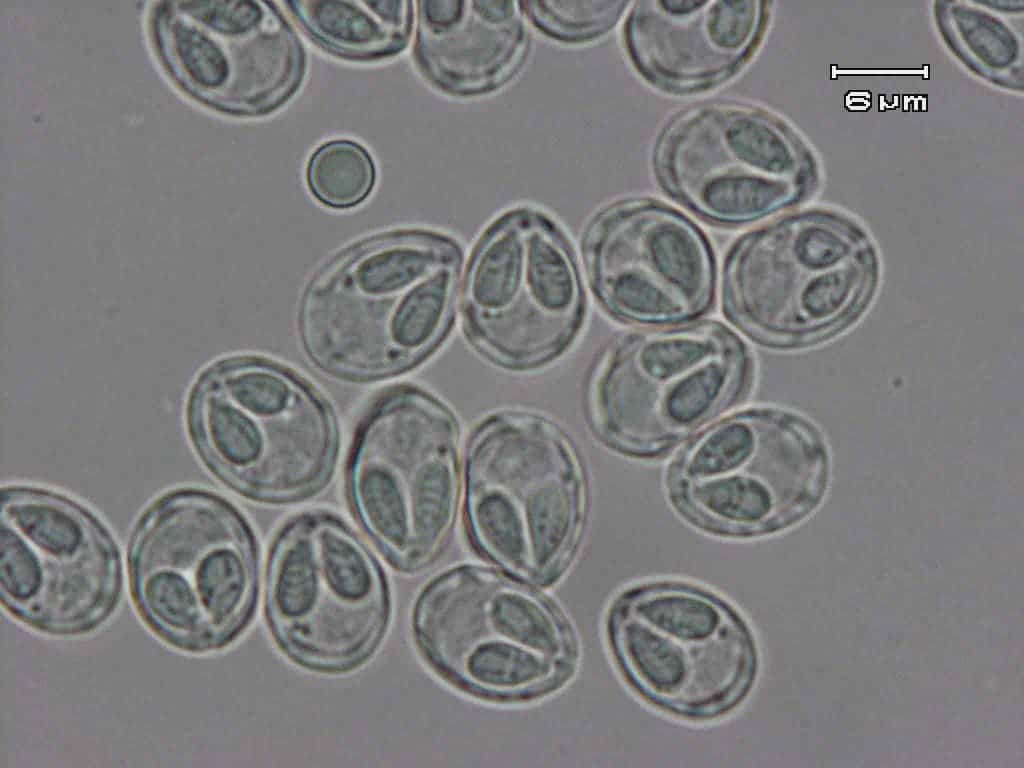What’s an animal? That’s a harder question to answer than ever, given scientists found a group of microscopic parasites called myxozoans made up of just a few cells are in fact jellyfish. These look nothing like jellyfish, mind you, but the genetic analysis is unambiguous: these are still jellyfish.

Fresh spores of Myxobolus nagaraensis. How fitting that these look like alien heads since by all means they evolved so. Photo: T. Kageyama
According to Wikipedia, animals are multicellular, eukaryotic organisms of the kingdom Animalia. All animals are motile, meaning they can move spontaneously and independently, at some point in their lives. Yet again, we have these little buggers. “Animals are usually defined as macroscopic multicellular organisms, and this is not that. Myxozoa absolutely redefines what we think of as animal,” said Paulyn Cartwright of the University of Kansas.
Myxozoans make up a diverse group of more than 2,100 parasites. These usually plague commercial fish, and some parasite infections cause lethal effects. Non-lethal effects can include the production of small but obvious white cysts in the muscle that make fillets unsightly, unappetising and therefore unmarketable. Oddly enough, when the myxozoans reach the brain and spinal chord of trout and salmon they cause whirling disease which compel the fish to swim in circles. Peculiar beasts, but also elusive since it’s not clear how the myxozoans evolved.
Some have proposed these have evolved from single-celled organisms, but later DNA sequencing showed they were animals, or almost so. Almost since myxozoans lack the Hox genes, essential for embryonic development in animals.
Though they lack a gut and mouth, the structure of the myxozoans is complex resembling the cells of cnidarians – a group that includes jellyfish, corals and sea anemones. What Cartwright and colleagues found after they sequenced the genomes of two distantly related myxozoan species is that these are in fact cnidarians.
Their genomes are 20 to 40 times smaller than a jellyfish. At 20 million base pairs, it’s actually one of the smallest genomes ever reported in an animal. For comparison, the human genome numbers 3 billion pairs of bases.
What we’re witnessing is retrograde evolution. Typically, an organism evolves from simplicity to complexity, but the reverse process happened to the myxozoans. In time, the myxozoans shed a lot of DNA and turned into a lesser organism. Perhaps, they weren’t parasites to begin with.
This may be the first known case of simplification from a macro to a microorganism, a cheap trick which evolution likely used more than once though.
“First, we confirmed they’re cnidarians,” Cartwright said in the statement. “Now we need to investigate how they got to be that way.”
“It would be hard to recognize such animals because they would look so different from their closest relatives,” Cartwright said. “I think with new technologies such as whole-genome sequencing, we can better identify the evolutionary origins of some of these strange creatures.”









